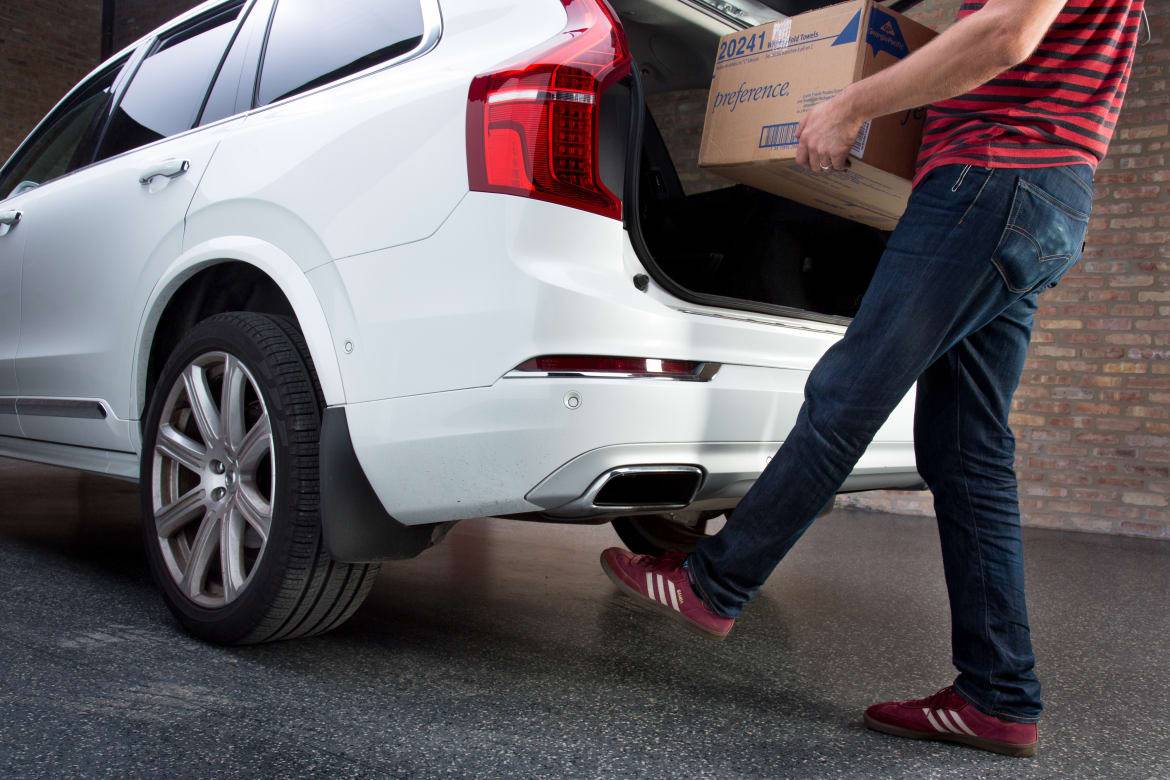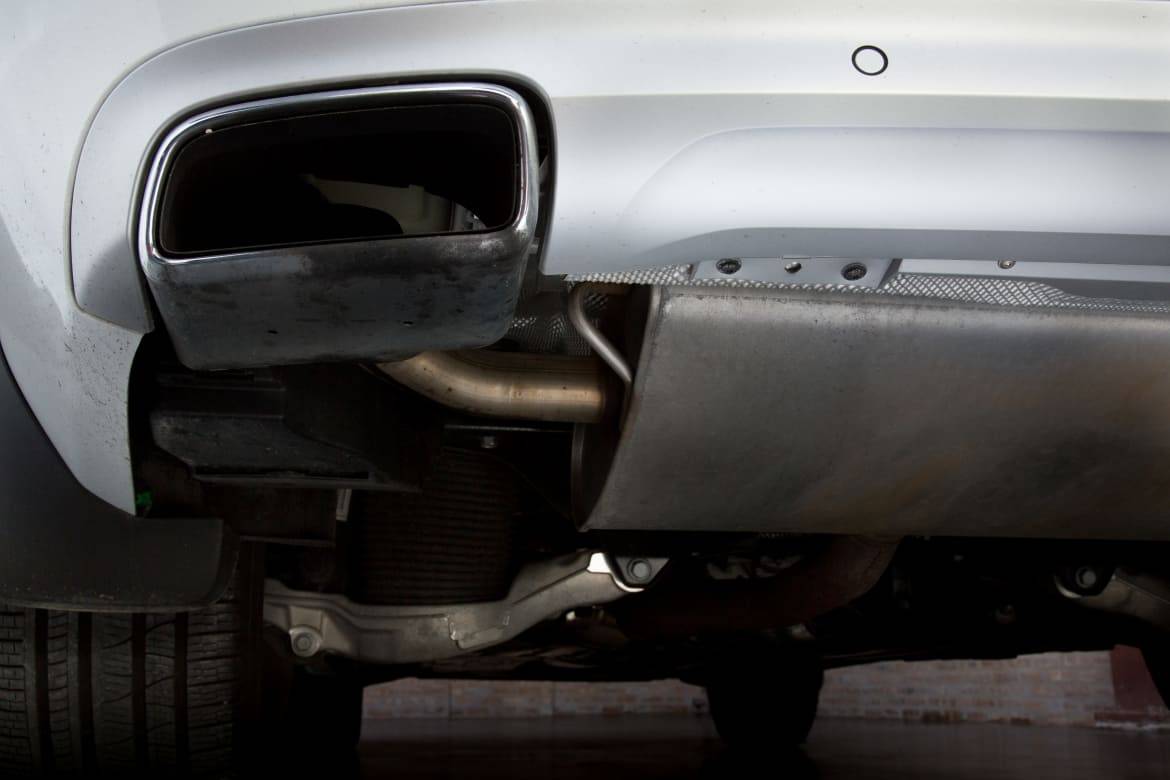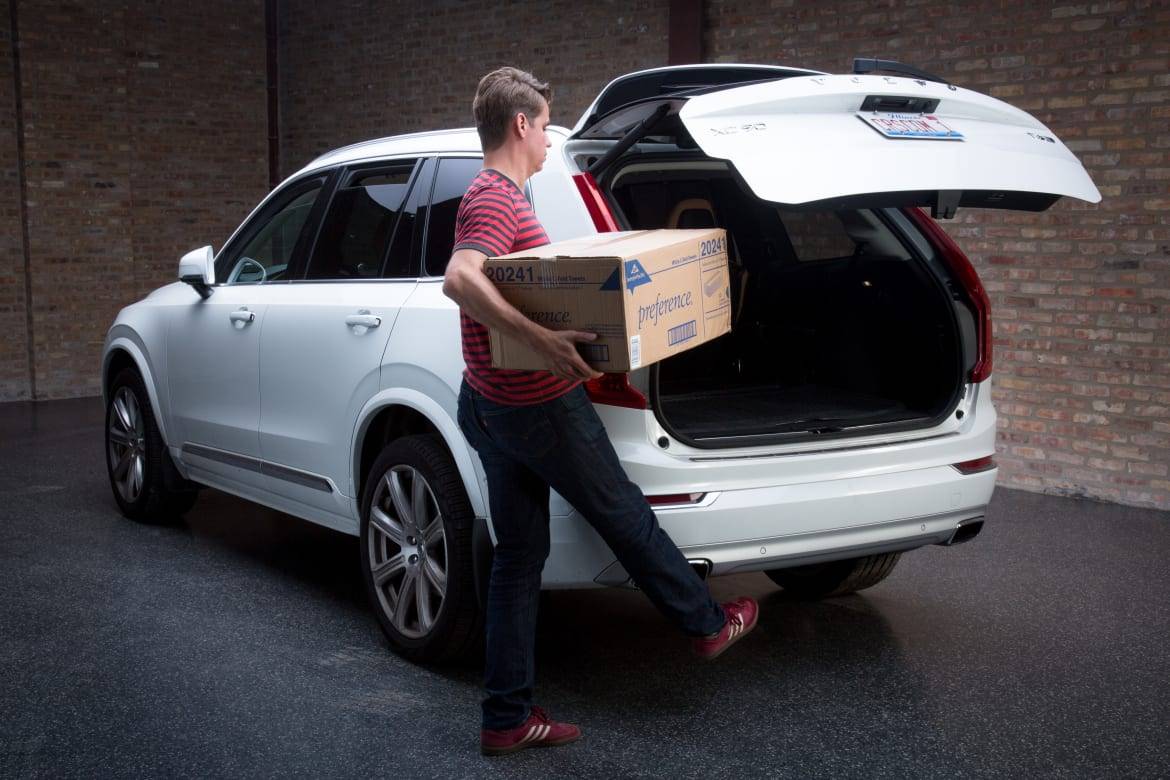Is the Volvo XC90's Hands-Free Liftgate Easy to Use?


CARS.COM — From in-car vacuum cleaners to systems that will parallel park for you, there’s no shortage of available convenience features in new cars. One relatively new one is the hands-free liftgate, which automatically opens when the key fob is detected to make loading luggage easier when your hands are full.
Related: What Gas Mileage Does Our 2016 Volvo XC90 Get After 12,000 Miles?
It’s a practical idea that’s been implemented a few different ways. On Hyundai and Kia models with the feature, the liftgate will automatically open when the key fob has been detected for a few seconds. On Ford models, however, you must make a kicking motion under the rear bumper for the liftgate to open.
Our long-term 2016 Volvo XC90 has a standard hands-free liftgate that follows the Ford approach. While getting the XC90’s liftgate to consistently open was harder than I thought it’d be, once I figured out where the sensor was — and the proper kicking motion — it worked well.
It’s not evident where or how you’re supposed to kick your foot to get the liftgate to open, so I spent some time with the XC90’s Quick Start guide looking for answers. The guide says to swing your foot under the left side of the bumper while the key fob is in range, but that’s as specific as it gets. I tried a few different spots — just left of the rear bumper’s center as well as near the left rear tire — without success until the liftgate suddenly started opening. I finally determined that the foot sensor is between the left exhaust tip and the rear parking sensor immediately to the right.

Finding the sensor isn’t the end of the story. Your kicking motion also plays a big part in determining how long you have to stand there swinging your foot, waiting for the liftgate to open. At first, it took about six seconds of swinging my left foot under the rear bumper before the liftgate opened. That seemed like a long time, so I tried moving my foot once to the right, then left and then back from the bumper. That made the liftgate open immediately, cutting the time spent on one foot down to about a second. After that it was easy to consistently make the liftgate open, which hadn’t been the case with the other kicking techniques.

Once you use the right kicking motion, the XC90’s hands-free liftgate responds more quickly than the Hyundai/Kia approach, but the system’s main disadvantage — giving up stable footing to make that kicking motion — is a big one. This feature is most useful if you’re carrying something bulky or heavy that you don’t want to set down, but that’s also when it’s best to have two feet on the ground. This, and the varying location of the bumper sensor in cars with this feature, were the two main complaints Cars.com editors had with this approach — and why they like the Hyundai/Kia method better.

Mike Hanley has more than 20 years of experience reporting on the auto industry. His primary focus is new vehicles, and he's currently a Senior Road Test Editor overseeing expert car reviews and comparison tests. He previously managed Editorial content in the Cars.com Research section.
Featured stories

15-Year Car Loans Aren’t a Thing, But Americans Are Getting More Comfortable With Long Loan Terms

2025 Kia Telluride Review: Rougher Roads Ahead



